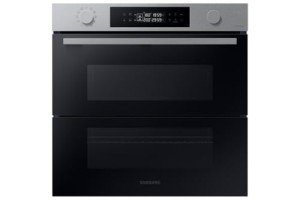Why Is This Integrated Hob And Oven So Beneficial? During COVID-19
Integrating Cooking: A Comprehensive Guide to Integrated Hobs and Ovens
In the modern kitchen, efficiency integrates seamlessly with design. An integrated hob and oven system characterizes this blend, providing both performance and aesthetic appeal. As home cooks look for ways to boost their culinary spaces, comprehending the benefits and features of integrated hobs and ovens becomes essential. This short article looks into the various aspects of integrated cooking appliances, supplying insights into their advantages, installation considerations, and upkeep ideas.
What is an Integrated Hob and Oven?
An integrated hob and oven setup refers to the design in which the cooking hob (the surface on which pots and pans are placed to prepare food) and the oven (the device used to bake, roast, and broil) are created to fit perfectly into kitchen cabinet systems. This cohesive style not only conserves space however also boosts the visual uniformity of the kitchen.
Secret Features of Integrated Hobs and Ovens
- Space Efficiency: These appliances are created to fit within standard cabinets, optimizing kitchen area while enabling more storage alternatives.
- Stylish Appearance: Integrated models offer a streamlined, modern appearance that can elevate any kitchen's visual.
- Boosted Functionality: Many integrated systems come with advanced features such as induction cooking, self-cleaning ovens, and smart innovation compatibility.
- Better Usability: Placing the hob at a proper height and having the oven conveniently positioned listed below can enhance cooking ergonomics.
Benefits of Integrated Hobs and Ovens
The growing choice for integrated hobs and ovens occurs from several associated benefits:
1. Space-Saving Design
- Integrated appliances remove the need for bulky standalone systems.
- They permit more counter area, developing a functional work space for cooking.
2. Aesthetic Cohesion
- Integrated systems can be finished to match cabinets, offering a streamlined and unified look.
- The kitchen can maintain a minimalist design, without visual mess.
3. Superior Functionality
- Features like touch controls, timers, and automated cooking programs can improve the cooking experience.
- Induction hobs can supply quicker cooking times and more accurate temperature control compared to standard gas or electric hobs.
4. Energy Efficiency
- Lots of modern integrated ovens feature improved insulation and energy-efficient functions, decreasing energy usage.
- Induction hobs use energy directly in the pots and pans, leading to less heat loss and faster cooking.
Installation Considerations
When considering an integrated hob and oven, a number of factors need to be evaluated during setup.
1. Area Measurements
- Kitchens Layout: Ensure the measurements of the readily available area accommodate both the hob and oven.
- Ventilation: Adequate ventilation is important to avoid getting too hot and make sure effective operation, particularly with gas designs.
2. Electrical and Gas Connections
- Power Supply: Verify that the kitchen's power supply meets the appliance requirements (voltage, amperage).
- Gas Lines: For gas hobs, expert setup might be necessary to ensure security.
3. Modification and Finishes
- Pick finishes that complement kitchen interiors, such as stainless-steel, glass, or perhaps customized cabinetry to hide the appliances.
4. Availability
- Ensure that both the hob and oven are quickly obtainable. An ergonomic setup will enhance the cooking experience and make it more secure.
Integrated Hob and Oven Models
Design
Type
Secret Features
Rate Range
Bosch Series 4 HBG634BBR
Built-In
Wi-Fi connection, multiple cooking modes
₤ 1,200 – ₤ 1,500
Samsung NZ48K7570UG
Induction
Flex zone, smart technology, touch controls
₤ 1,500 – ₤ 2,000
Miele H 6260 BP
Built-In
Self-cleaning, automated programs, sleek style
₤ 2,500 – ₤ 3,500
NEFF B57VR22N0
Multifunction
Slide&& Hide door, advanced heat distribution
₤ 2,000 – ₤ 2,500
Upkeep Tips
To optimize the life and functionality of integrated hobs and ovens, appropriate maintenance is important:
- Regular Cleaning: Clean the hob and oven frequently to avoid buildup from spills and food residues. Usage non-abrasive cleaners to safeguard surface areas.
- Inspect Seals and Gaskets: Check oven door seals to make sure effective heating and prevent energy loss.
- Examine for Damage: Regularly examine gas hose pipes, electrical cable televisions, and connections for wear or damage. Immediate repair or replacement is vital for security.
- Follow Manufacturer's Guidelines: Adhere to the particular maintenance instructions provided by the maker for ideal efficiency.
Frequently asked questions
1. Can I set up an integrated hob and oven myself?
- While some property owners choose DIY installation, it is recommended to employ a professional, specifically when gas connections or electrical circuitry are involved.
2. Are integrated hobs and ovens energy-efficient?
- Many modern-day integrated systems are developed with energy performance in mind, including thermal insulation and energy-saving modes.
3. What is the very best material for an integrated hob and oven?
- Stainless steel is popular due to its sturdiness, ease of cleansing, and resistance to corrosion. Nevertheless, glass ceramic and enamel-coated options also provide aesthetic appeal.
4. How do I fix common problems with integrated hobs and ovens?
- Refer to the user manual for repairing guidelines. Fundamental concerns like power failures or uneven cooking might frequently be solved through simple adjustments or resets.
An integrated hob and oven system offers a mix of functionality and style that aligns with modern-day kitchen styles. By comprehending the advantages, setup requirements, and upkeep suggestions connected with these appliances, homeowners can make informed choices that enhance their cooking experiences. As built in electric oven and hob package develop into multifunctional areas, integrated cooking solutions will continue to gain popularity, forming the future of cooking areas.
